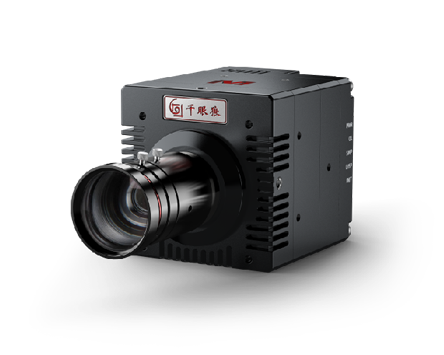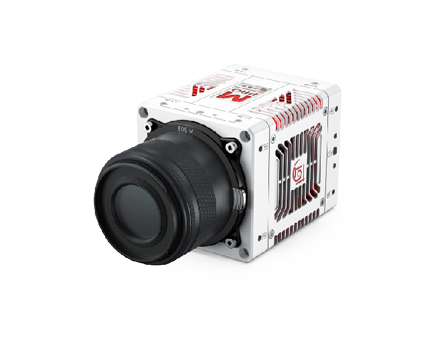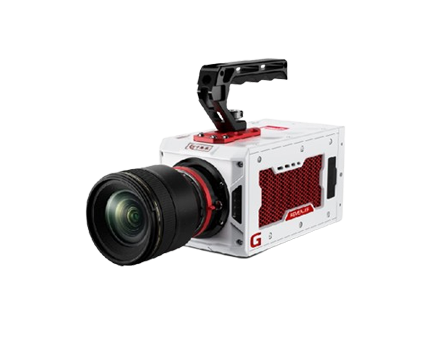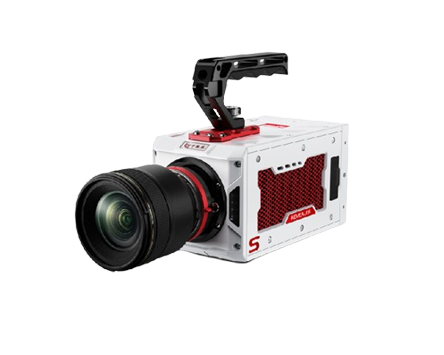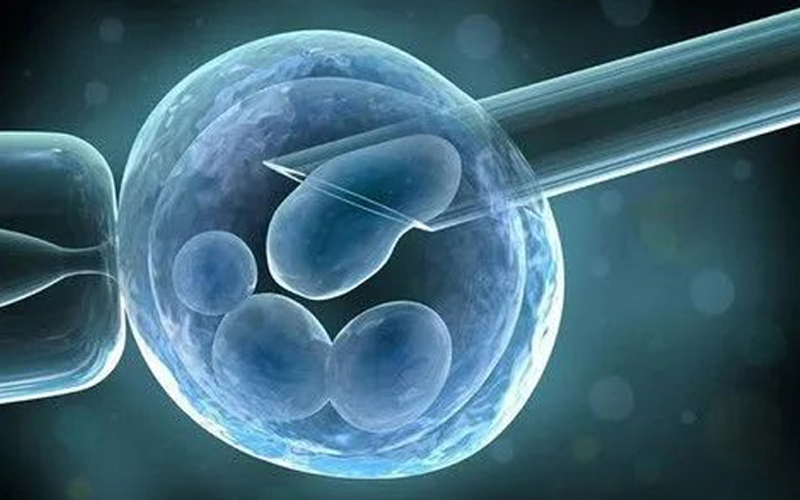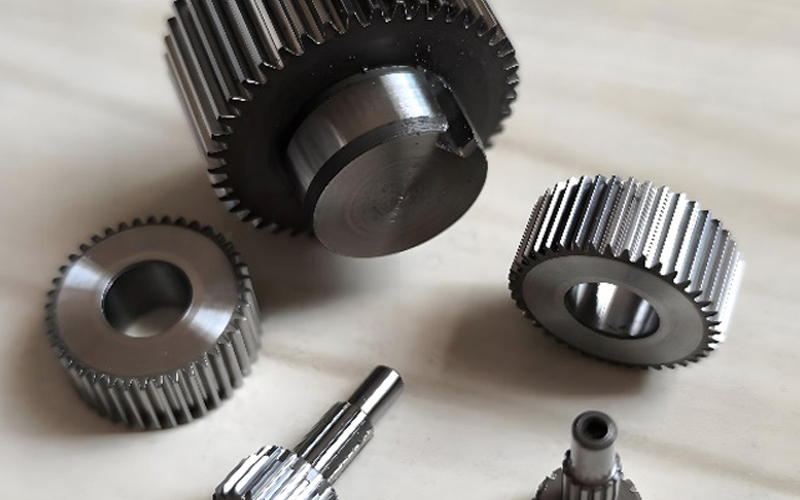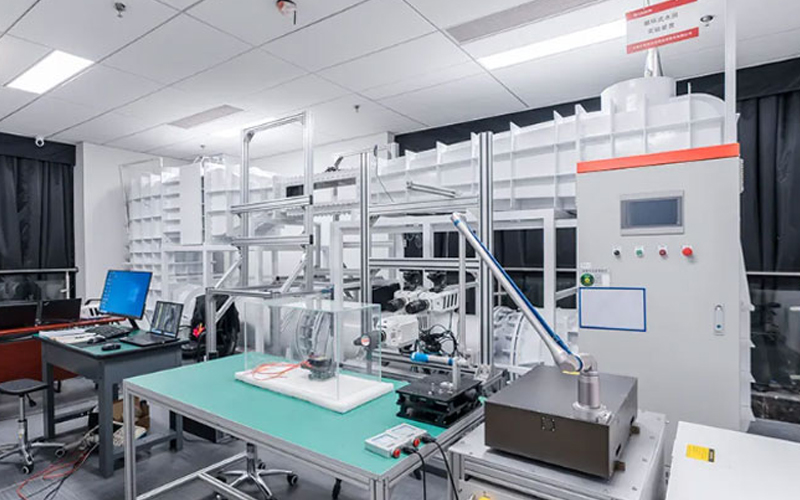
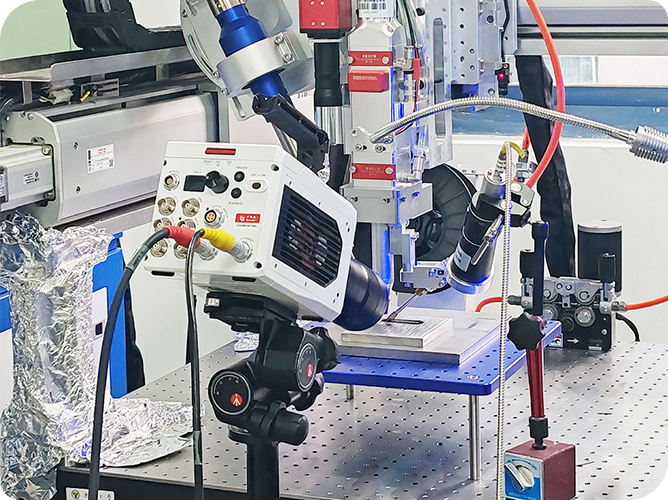
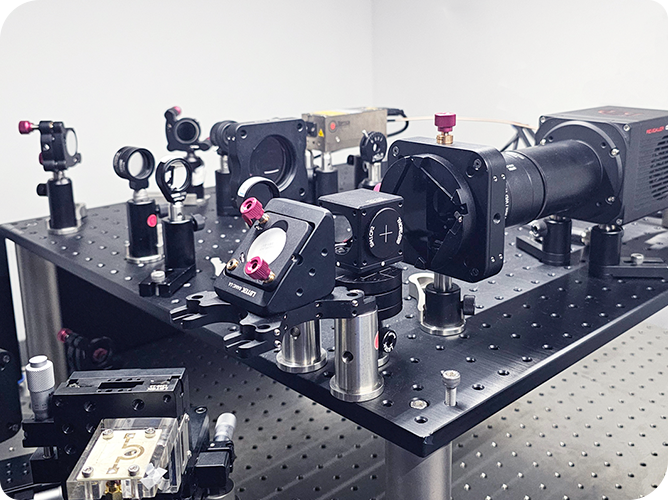
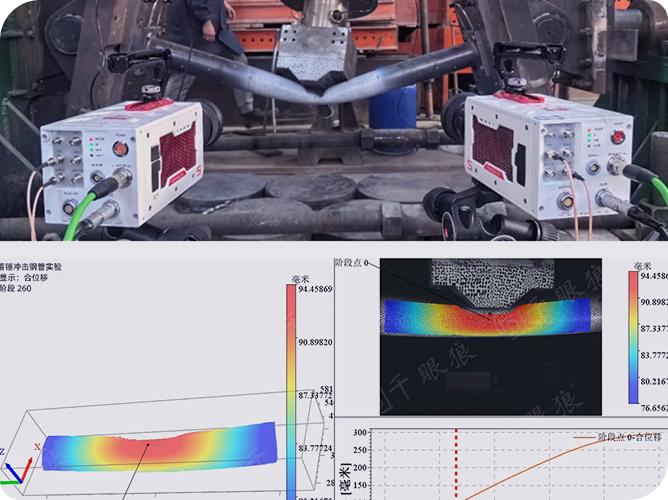
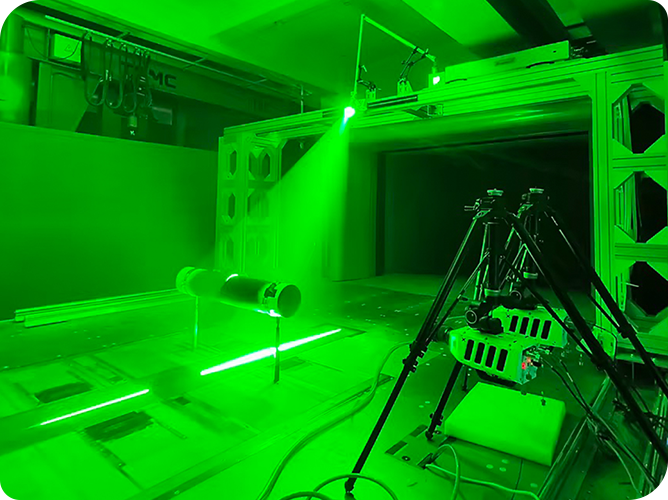
The study of the self-assembly behavior of droplets on hydrophilic/hydrophobic patterned surfaces contributes to the understanding of the kinetic behavior of droplets on special complex surfaces and provides a scientific basis for the development of novel microfluidic devices and materials.
Researchers from Jiangnan University combined the visualization experiment method based on high-speed camera technology with the numerical simulation method based on VOF and the calculation method based on the mathematical model of energy conservation of droplet impact to observe the behaviors of droplet spreading, contraction, splitting, splashing, etc., and systematically study the effects of Reynolds number Re, Weber number We, and the characteristics of the patterned substrate on the behaviors of the droplets. Among the visualization experimental part, the dynamic behavior of droplet deposition behavior and splitting kinetics on patterned surfaces is investigated.
1) Glass substrate coated with SiO2/OTS coating by placing a shadow mask to separate hydrophilic and hydrophobic regions.
2) Piezo-driven micro-droplet generator that produces droplets on demand, with droplet volume (diameter 1~2.3 mm) controlled by the nozzle size and droplet velocity (0~1 m/s) determined by the distance between the nozzle and the substrate.
3) Revealer High Speed Camera (Revealer, X113M).
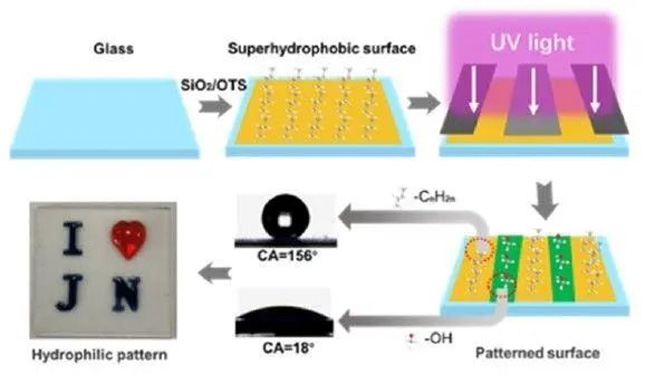
Figure 1
The experimental study based on high-speed camera technology is key to observe the behaviors of droplet spreading, shrinking, splitting, and splashing on different hydrophilic and hydrophobic surfaces, and to visualize and record the process of droplet high-speed impacts at a speed of 10000 fps/s and an image resolution of 20µm/pixel.
1) A hybrid wetted surface is created by irradiating a hydrophobic SiO2/OTS substrate covered with a shadow mask with UV/ozone light, which converts its exposed regions into hydrophilic regions. The static contact angle SCA of the pristine SiO2/OTS substrate is Θpho = 156°, and the SCA of the region exposed to UV/ozone is Θphi , as a function of the exposure time, as in Fig. 1.
2) UV/ozone light at wavelengths of 184 nm and 254 nm is effective in breaking down and reacting with organic compounds, which in turn produces a hydrophilic effect on exposed surfaces covered by shadow masks, while unexposed SiO2/OTS coated surfaces remain hydrophobic. The time to create a contact angle of 5° to 156° by UV/ozone treatment comes as in Figure 2.
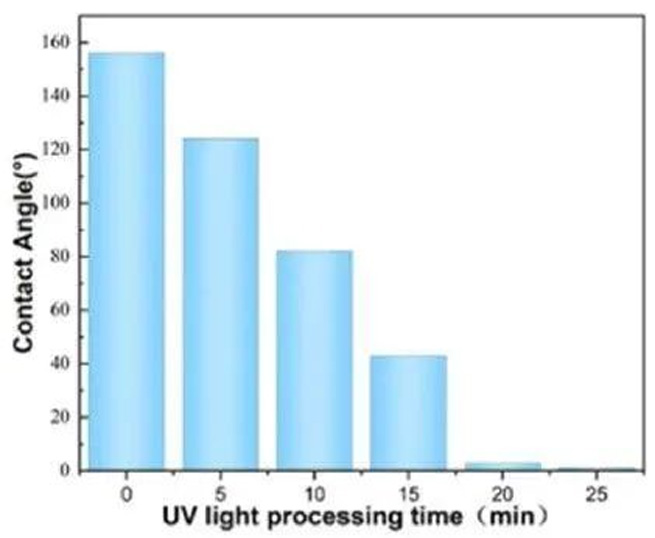
Figure 2
3) Water droplet impact experiments were carried out by controlling the UV/oxygen exposure time to change the static contact angle SCA in the hydrophilic region, which in turn changed the SCA contrast (ΔΘ = Θpho-Θphi) of the hydrophilic/hydrophobic striped surface. Visual recording with the high-speed camera Revealer X113M. In the experiment, water droplets impacted the hydrophilic stripes and bridged to the hydrophilic regions on either side. When SCA contrast ΔΘ = 86°, Reynolds number Re = 200 and Weber number We = 1.1, the impacted droplets do not split. The liquid bridge over the hydrophilic stripes simply oscillates until a “butterfly” shaped water bridge is formed over the patterned area, as shown in Figure 3.

Figure 3
4) Continue to control the UV/oxygen exposure time for water droplet impact experiments. When the SCA contrast ΔΘ = 126°, Reynolds number Re = 200, and Weber number We = 1.1, the water droplets contracted rapidly after landing on the hydrophilic stripes and expanded to the hydrophilic region on both sides before splitting, stabilizing, and confining themselves to the hydrophilic region, as shown in Fig. 4.

Figure 4
(5) The experimental results show that the SCA contrast ΔΘ of hydrophilic/hydrophobic striped surfaces has a strong influence on the droplet impact and deposition characteristics.
6) A numerical model based on volume fraction VOF was further employed to further investigate the droplet impact on a non-homogeneous wetted surface with hydrophilic/hydrophobic patterns. At the same time, a mathematical model based on the principle of energy conservation of “kinetic energy” and “surface energy” brought about by droplet impact is used to study the droplet splitting mechanism in depth and predict the droplet splitting phenomenon.
The results of visualization experiments based on high-speed camera, numerical simulations based on volume fraction VOF, and calculations based on the mathematical model of energy conservation coincide in the prediction of droplet splitting.
The results show that droplet impact velocity, hydrophilic/hydrophobic contrast and stripe width are the main factors affecting droplet splitting and deposition morphology, which can provide a qualitative basis for more precise manipulation of droplet self-assembly capability in inkjet printing and microfluidic applications.
